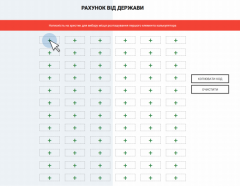Luxury car tax in perspective
New luxury car tax will require individuals who purchase a car with a 3.0 liter engine (or larger) pay an annual tax of 25,000 hryvnia (approx. $1,400).
The 2015 State Budget for Ukraine, instead of proposing an austerity budget with serious spending cuts, calls for more spending in several areas – including social welfare services. Increased government spending, it follows, should occur only when the state is able to collect enough tax revenue to cover its growing expenditures. Surprisingly, the budget approved by the Verkhovna Rada on December 28th shows a 28% increase in tax revenues when compared to 2014.
In order to survive its current economic crisis, the country needs the support of international donors and also successfully raise tax revenues at home. The on-going war in Eastern Ukraine, to say nothing of the loss of the entire peninsula of Crimea, means that there are fewer potential sources with which to fill the state’s coffers. To cover these losses, the government has come up with a series of new taxes, including luxury taxes.
One proposed luxury tax will require individuals who purchase a car with a 3.0 liter engine (or larger) pay an annual tax of 25,000 hryvnia (approx. $1,400). The underlying premise of the tax is that the more liters an engine has, the more powerful (and expensive) it is. Note that there are a number of luxury vehicles with engines smaller than 3.0 liters (for example Lexus RX, Mercedes Benz ML-Class, BMX 6, Porsche Cayman or the trendy Tesla all come with engines under the 3.0 liter mark). It will also, by default, include a number of cars that are not traditionally defined as ‘luxury vehicles’.
What is most striking about this new tax, which is part of a new property tax package, is that its authors decided to use engine size when they simply could have used the comprehensive state registry that has the real value of virtually every car on the market listed. This approach would be more in line with international practice.
From 1990 until 2002, the United States had a luxury tax on any vehicle priced over $30,000. The 10% tax was applied only to the amount paid over $30,000. If you bought a car for $50,000, the tax was $5,000. For a $35,000 car, you paid $500. In reality, the tax was paid by the automobile’s manufacturer and included in the price tag. This tax was only applied to cars and not SUVs, minivans etc. since they were then erroneously viewed as being only used for business.
Australia has a similar luxury car tax, though the price ceiling for vehicles is divided between fuel efficient and non-fuel efficient cars and the tax rate is much higher at 33%. Both of these taxes were only paid one time (at the time of purchase), unlike the new tax proposed by the Cabinet of Ministers.
In the end, the tax is passed onto the consumer and may serve as a disincentive to purchase a luxury car as it will lead to a substantial mark-up in the price. The luxury car tax in Ukraine differs from these taxes in that it will be paid annually directly by the owner for vehicles up to it reaches 5 years of age and the revenues will go directly into the local budget.
The Ministry of Finance’s says that only 17,300 vehicles will qualify for the tax this year, which nation-wide will bring in only 432.5 million hryvnia ($24 million) in the best case scenario. The number of purchases for automobiles, according to one Ukrainian automobile consulting firm, has fallen 80% since May 2013. Add to this the fluctuating level of the hryvnia versus the dollar and euro, this tax will likely lead to less, not more, new automobile purchases in 2015 – and as a result, less tax revenues.
